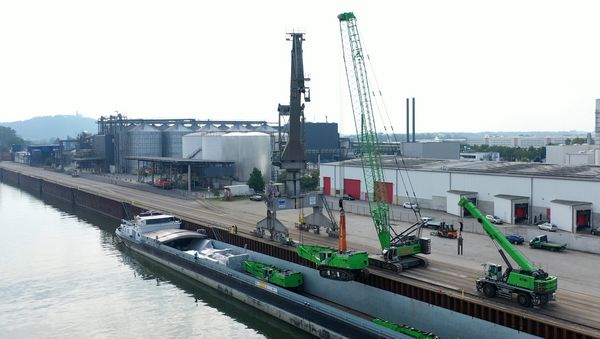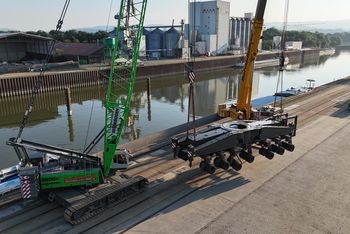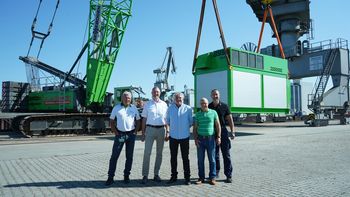Machine shipping by barge
SENNEBOGEN has successfully loaded eight large machines onto a barge to transport them by water from Straubing via Antwerp to Charleston, South Carolina. The machine transport was carried out in close cooperation with the heavy haul com-pany Karl-Groß from Regensburg, which has extensive experience in the field of heavy load transportation. The use of barges brings considerable advantages in terms of sustainability and costs.
Challenges during loading
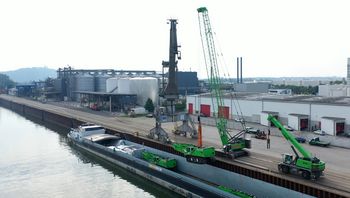
Loading the eight machines, including the SENNEBOGEN 855 and 870 models in crawler and mobile versions, presented a logistical challenge. With operating weights of between 70 and 105 tons, loading them onto the barge was a complex undertaking that required special measures. "As the machines could not be lifted completely, we had to dismantle the counterweights on site and reassemble them after loading. It was also necessary to temporarily close the access road between the SENNEBOGEN plant and the port," explains Roland Hermann, Head of Customs and Foreign Trade Machine Shipping at SENNEBOGEN.
Tandem lift: Efficient process and innovative lifting technology
Machines with a total weight of 700 tons were loaded. The heavy load required the use of a tandem hoist with two cranes, which were precisely controlled by experienced crane operators. This technique enables the weight to be distributed evenly and minimizes the load on the cranes. "The challenge was to lift the machines into the barge without any interruptions or jolts. The first machine was loaded at 7 a.m. and seven machines were safely stowed by midday," reports Hermann.
Shipping by barge offers considerable environmental benefits
The use of inland waterway vessels for transportation offers considerable environmental benefits. While CO2 emissions for road transport are around 113 grams per tonne-kilometer, they are only 34 grams for transport by inland waterway vessel. This reduces CO2 emissions for the approximately 800-kilometre route by 75 percent, which corresponds to a saving of around 49 tons of CO2. "This is an important step towards increasing the sustainability of our machine shipping. We plan to carry out inland waterway loading regularly in future and are currently working on implementing a comprehensive sustainability report at SENNEBOGEN," Hermann continues.
Coordination and cooperation with the port
A smooth loading process was only possible thanks to the close cooperation with the port of Straubing, which was heavily involved in the planning and implementation of the barrier measures. The city of Straubing also supported the necessary transport permits.
Route via Antwerp and onward shipping to South Carolina
The machines will travel from Straubing via Antwerp, where some of the machines will be loaded directly onto an ocean-going vessel, while the others will be transported on to Zeebrugge. The final destination is the port of Charleston, South Carolina, which is an important transshipment point for the American SENNEBOGEN LLC due to its good infrastructure and service quality. The transportation from Belgium to Charleston will take around two to three weeks.
Heavy-duty shipping via inland waterway vessel at SENNEBOGEN
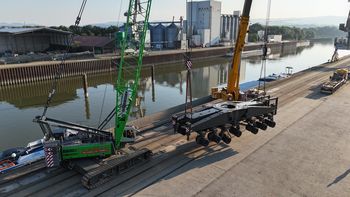
The successful loading of the eight machines demonstrates the potential of inland shipping as a cost-effective and environmentally friendly alternative to conventional transport routes. "We used to concentrate on North Sea ports such as Hamburg and Bremerhaven, but the high reloading costs in Duisburg made this increasingly unattractive. Transporting machinery by inland waterway vessel enables us to reduce logistics costs and act more sustainably at the same time," explains Hermann. Further transports were carried out by barge in the summer. These included the loading of a SENNEBOGEN 895 E material handler to Israel and a 9300 E harbor crane to Turkey. The heaviest component to be loaded weighed an impressive 107 tons.
The cooperation with the heavy load terminal and the flexible planning of transport routes will continue to play a central role in SENNEBOGEN's machine shipments in the future.
Press images
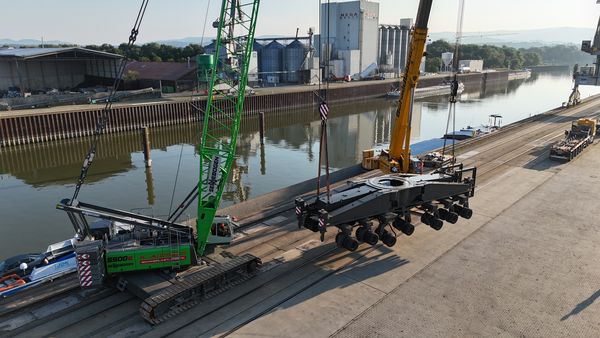
Press images
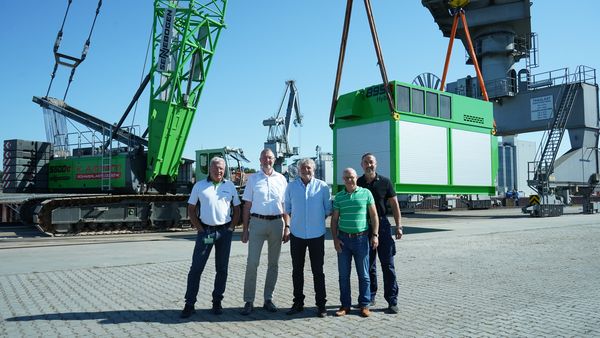
Press images
